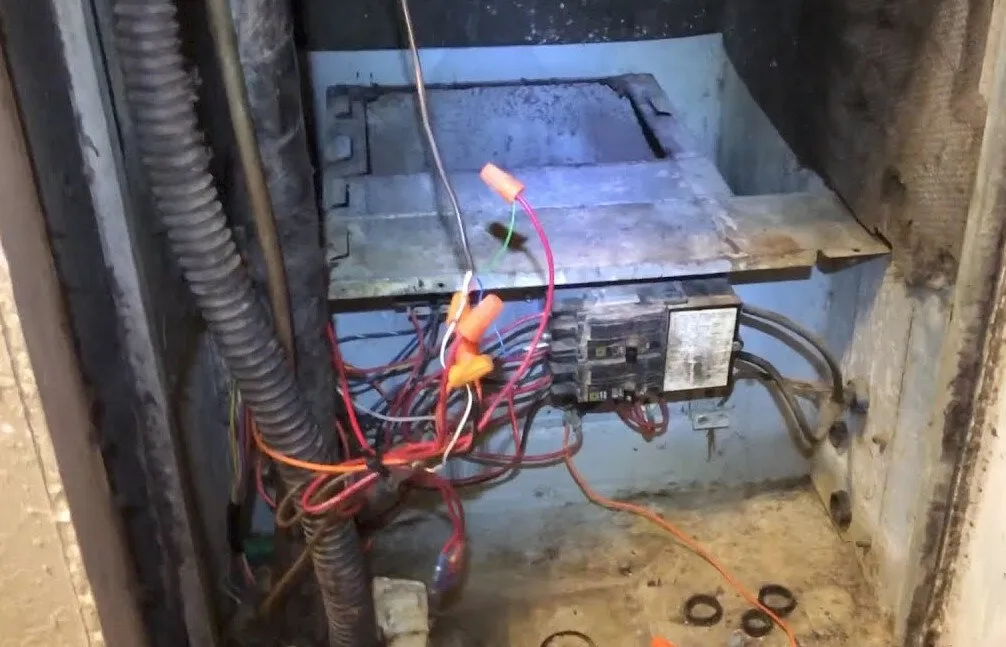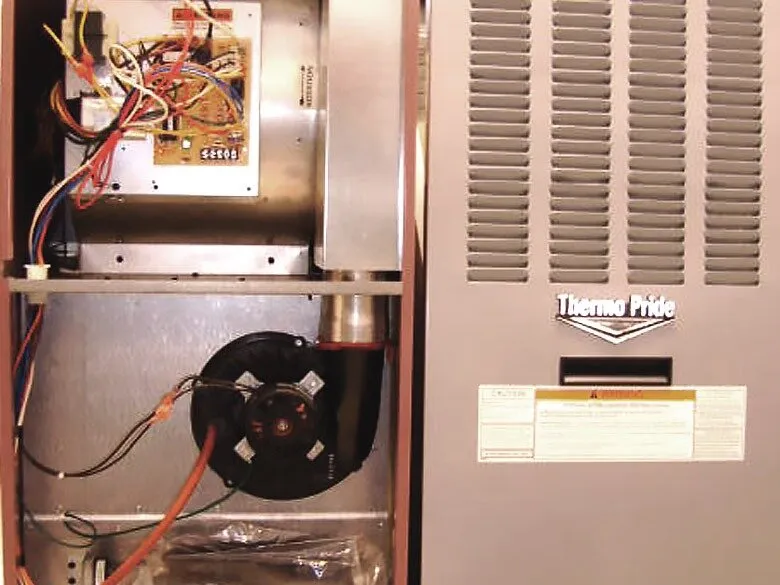Are you experiencing issues with your mobile home furnace? Don’t worry, you’re not alone! Mobile home furnaces can be tricky to maintain and repair, but with the right knowledge and guidance, it’s possible to keep them running smoothly. In this comprehensive guide, we’ll walk you through everything you need to know about mobile home furnace repair. From common problems to troubleshooting steps and even tips on when to replace your unit altogether, we’ve got you covered. So grab a cup of coffee, and let’s get started!
Getting to Know Your Mobile Home Furnace
Before you can repair your mobile home furnace, it’s essential to understand how it works. Mobile home furnaces are designed specifically for use in manufactured homes and operate differently from traditional residential heating systems.
One significant difference is the location of the unit itself. Most mobile home furnaces are installed on their sides or upside down, which can make accessing certain parts a bit more challenging than with conventional furnaces.
Another thing to keep in mind is that mobile home furnace ductwork is typically smaller in diameter compared to standard residential systems. This requires increased attention when maintaining and repairing your system since improper airflow can cause issues like overheating or carbon monoxide buildup.
Mobile home furnaces also have different fuel sources such as propane, natural gas, or electricity. Knowing what type of fuel source your furnace uses will help you troubleshoot issues more effectively later on.
Understanding the age and specifications of your mobile home furnace will enable you to choose appropriate replacement parts if necessary. With these things in mind, let’s dive deeper into repairing common issues found with this type of heating system!

Mobile home furnace HVAC repair
Types of Mobile Home Furnaces
Mobile home furnaces come in different types, each with its own set of advantages and disadvantages. One type is the electric furnace which utilizes electric coils to generate heat. This type of furnace is generally less expensive than other options but can be costly to operate.
Another common type of mobile home furnace is the gas furnace which uses natural or propane gas as a fuel source. Gas furnaces are more energy-efficient compared to electric ones, making them an ideal choice for those who want to save on utility bills.
Another option is the oil furnace which burns heating oil to produce heat. Although it’s not as popular as gas or electric furnaces, this type of mobile home furnace can be an excellent alternative for areas where natural gas isn’t readily available.
There’s also the wood stove which runs on firewood or pellets and provides a cozy ambiance while keeping your mobile home warm during cold weather. It’s eco-friendly and cost-effective but requires regular maintenance.
Choosing the right type of mobile home furnace depends on several factors such as availability and affordability of fuel sources, climate conditions in your area, and size of your mobile home, among others.
Common Problems Experienced by Mobile Home Furnaces
Mobile home furnaces, like any other heating system, can experience problems from time to time. Knowing the common issues that your furnace may encounter will help you identify and address them before they become more severe.
One of the most common problems faced by mobile home furnaces is a malfunctioning thermostat. If your furnace doesn’t turn on or off at the right temperature or it doesn’t seem to be working correctly, there’s a good chance that it’s thermostat needs repair or replacement.
Another issue that many mobile homeowners face with their furnaces is clogged air filters. A dirty filter can cause your furnace to work harder than necessary, leading to higher energy bills and reduced efficiency over time.
If your furnace starts making strange noises like rattling or banging sounds, this could indicate a problem with the blower motor. Dirty burners might also cause strange noises which need thorough cleaning and maintenance.
Other possible problems include pilot light malfunctions, blocked ductwork obstructing airflow causing improper heat distribution in rooms, and frequent cycling due to incorrect wiring connections.
Regular maintenance of your mobile home furnace is essential for avoiding these issues as well as ensuring optimal performance throughout each year.
Signs that Your Mobile Home Furnace Needs to Be Repaired
One of the most challenging situations that mobile homeowners can face is a broken furnace. Without proper heating, your home will be cold and uncomfortable to live in, especially during winter months. That’s why it’s essential to know when your mobile home furnace needs repair.
- If you notice any unusual noises or sounds coming from the furnace, this could indicate a problem with your unit. Banging or rattling noises are common signs of mechanical issues within the system.
- If you have noticed that your energy bills have started to increase without explanation, then there could be an issue with the efficiency of your furnace.
- If you start noticing uneven heating throughout different areas of your mobile home or hot/cold spots around vents and registers- it’s time for maintenance!
- When you smell gas or any other burning odor emanating from the unit; immediately switch off all electronics and evacuate until help arrives.
Identifying these warning signs early on can prevent costly repairs down the line while ensuring that everyone in your household stays warm and comfortable throughout winter.

Mobile home furnace repair
When to Replace Your Mobile Home Furnace
Your mobile home furnace plays a vital role in keeping you comfortable during the colder months. However, just like any other appliance, it won’t last forever. So when is it time to replace your mobile home furnace?
- One factor to consider is age – most furnaces have an average lifespan of 15-20 years. If your furnace has reached or exceeded this range, it’s probably time for a replacement.
- Another sign that it’s time to replace your mobile home furnace is if you’re experiencing frequent breakdowns and repairs. While some minor repairs are common, constant issues can indicate a larger problem that requires more than just simple fixes.
- High energy bills may also be an indication that your furnace needs replacing. As they age, furnaces become less efficient and use more energy to heat up your home.
- If you find yourself constantly adjusting the thermostat but still feeling cold drafts or uneven heating throughout the house, this could be another indicator that it’s time for a new mobile home furnace.
It’s important to remember that investing in a new furnace can save you money in the long run with improved efficiency and fewer costly repairs.
Steps in Troubleshooting Mobile Home Furnace
Troubleshooting your mobile home furnace can be a daunting task, but it doesn’t have to be. By following a few simple steps, you can identify the problem and potentially fix it yourself.
- Check if the thermostat is working properly. Make sure it’s set to heat and that the temperature setting is higher than room temperature. If the furnace still isn’t turning on, move on to checking the power supply. Check if there’s power running through the unit by testing nearby outlets or circuit breakers.
- Inspect all filters for dirt buildup as clogged filters are often a common cause of furnace malfunctioning. Replace any dirty air filters with new ones right away.
- If none of these steps work, consider inspecting gas valves and burners for any damage or blockages that may prevent proper ignition or heating inside your furnace unit.
- Ensure that they’re clean before proceeding further in troubleshooting.
- Ensure ventilation pipes aren’t blocked by debris or obstructions which could hinder airflow and cause overheating in your furnace system.
By following these troubleshooting steps carefully while keeping safety precautions in mind at all times – like turning off fuel sources before commencing repairs- you will likely identify where exactly your mobile home furnace needs repair without spending loads of money on professional help!
How to Repair Mobile Home Furnace
The approach will vary depending on what’s causing the problem. Here are some common issues you might face, along with tips for fixing them:
- Clogged Air Filters: A clogged air filter can lead to reduced airflow and poor heating performance. To fix this issue, simply replace your air filter as per the manufacturer’s instructions.
- Malfunctioning Thermostat: If your thermostat is acting up, it could cause issues like short cycling or failure to turn on at all. First, ensure that the thermostat is set correctly and has fresh batteries installed.
- Ignition Problems: If your furnace won’t ignite or stay lit for more than a few seconds, there may be an issue with the ignition system such as a faulty pilot light or broken igniter assembly.
- Blower Motor Not Working: If you hear strange noises from your mobile home furnace blower motor or notice that it’s not turning on properly, then you’ll need to check if the capacitor needs replacing.
- Gas Valve Issues: Faulty gas valves can prevent proper heating of furnaces in cold indoor environments; therefore consulting professionals when dealing with such delicate parts should be highly considered by homeowners
Remember- always consult professional help when unsure about any repairs needed in order to avoid further damage and costly repairs down the road!
Should You Hire a Professional or Do the Repair Yourself?
It’s important to consider several factors before making a decision.
Firstly, assess your level of experience and knowledge about furnaces. If you have prior experience with furnace repairs and feel confident in your abilities, then doing it yourself might be a feasible option. However, if you are not experienced in this area, attempting to fix the problem could potentially lead to more damage and costlier repairs in the long run.
Consider also the complexity of the repair needed. Some problems may be simple enough for an amateur DIYer to handle on their own while others require specialized tools and expertise that only professionals possess.
Another factor is safety concerns. Furnace repairs can involve handling gas lines or electrical components which can be dangerous without proper training and equipment. A professional HVAC technician has been trained on how to safely handle these situations.
Weigh out the potential costs of hiring a professional versus doing it yourself. While hiring someone else may seem more expensive up front, they have access to discounted parts which will save money in long-term maintenance fees.
Final Thoughts
Keeping your mobile home furnace in good working condition is essential for your safety and comfort. Knowing how to troubleshoot and repair common problems can save you time, money, and inconvenience.
Remember to always follow the manufacturer’s instructions and safety precautions when repairing or maintaining your furnace. If you are unsure of what needs to be done or lack experience with repairs, it may be best to hire a professional.
Regular maintenance can also extend the lifespan of your furnace and prevent costly repairs down the road. Schedule an annual inspection by a qualified technician to identify any issues early on before they turn into major problems.
By following these tips and guidelines outlined in this mobile home furnace repair guide, you’ll be able to keep your home warm during those cold winter months while minimizing the risk of breakdowns or accidents.
See Also:
- 10 Mobile Home Remodeling Ideas for 2023
- How Much Does it Cost to Move a Double Wide Mobile Home in 2023?
- Mobile Home Investing: 2023 Guide
- Mobile Home Subfloor Repair Guide
- Guide to Buying a Mobile Home in Florida

